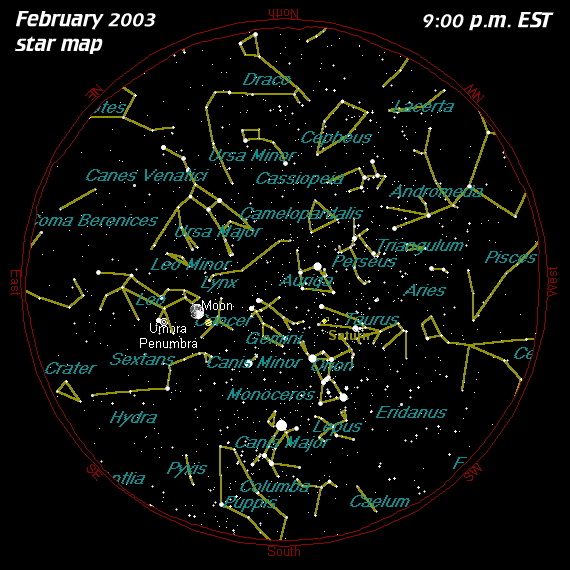



![[Moon Phases]](../moonphases/2003-02-phases.jpg) |
|---|
![[Winter's Finest]](2-03-winters-finest.jpg) |
|---|
![[Sundog near Flagstaff, AZ]](2-03-sundog.jpg) |
|---|
| Sundog near Flagstaff, AZ: Gary A. Becker, located north of Flagstaff, Arizona digitally photographed this summer sundog near sundown on June 24, 2002. The "dog" on the right is brighter than the one on the left near the top of the pine tree. The left dog, however, shows the reddish inner boundary which is characteristic of sunlight refracted through ice crystals and water droplets. The large tree in the center of the photograph was used to block out the sun. |
 |
